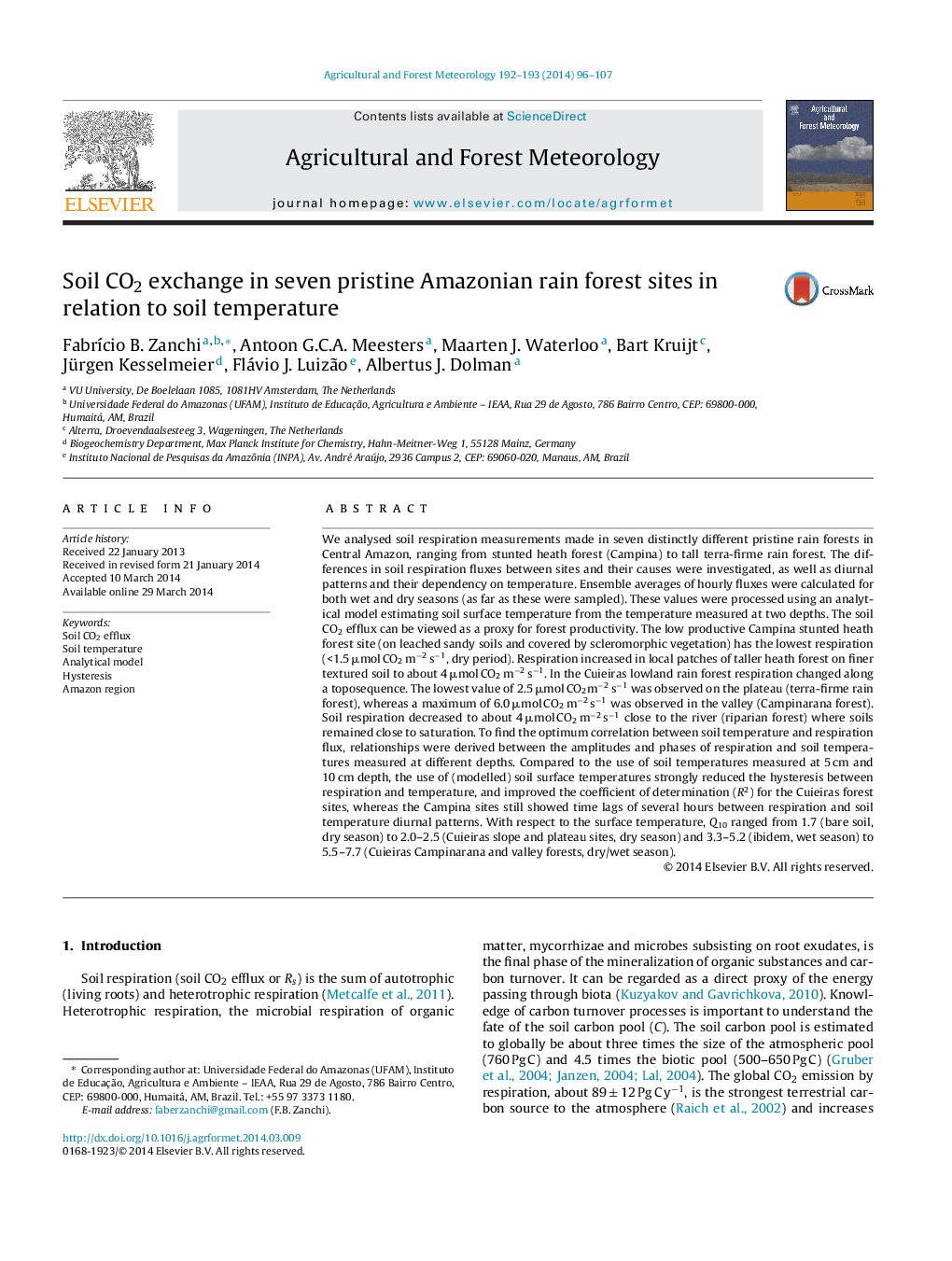| کد مقاله | کد نشریه | سال انتشار | مقاله انگلیسی | نسخه تمام متن |
|---|---|---|---|---|
| 81751 | 158336 | 2014 | 12 صفحه PDF | دانلود رایگان |
• Soil CO2 efflux measured in seven pristine Amazon rain forest sites.
• Mean soil respiration depends on soil type, texture and moisture.
• The respiration-temperature time-lags differ between the sites.
• Time-lags are often minimal if surface temperature is used.
• The longest time-lags occur for the slowest-growing vegetation.
We analysed soil respiration measurements made in seven distinctly different pristine rain forests in Central Amazon, ranging from stunted heath forest (Campina) to tall terra-firme rain forest. The differences in soil respiration fluxes between sites and their causes were investigated, as well as diurnal patterns and their dependency on temperature. Ensemble averages of hourly fluxes were calculated for both wet and dry seasons (as far as these were sampled). These values were processed using an analytical model estimating soil surface temperature from the temperature measured at two depths. The soil CO2 efflux can be viewed as a proxy for forest productivity. The low productive Campina stunted heath forest site (on leached sandy soils and covered by scleromorphic vegetation) has the lowest respiration (<1.5 μmol CO2 m−2 s−1, dry period). Respiration increased in local patches of taller heath forest on finer textured soil to about 4 μmol CO2 m−2 s−1. In the Cuieiras lowland rain forest respiration changed along a toposequence. The lowest value of 2.5 μmol CO2m−2 s−1 was observed on the plateau (terra-firme rain forest), whereas a maximum of 6.0 μmol CO2 m−2 s−1 was observed in the valley (Campinarana forest). Soil respiration decreased to about 4 μmol CO2 m−2 s−1 close to the river (riparian forest) where soils remained close to saturation. To find the optimum correlation between soil temperature and respiration flux, relationships were derived between the amplitudes and phases of respiration and soil temperatures measured at different depths. Compared to the use of soil temperatures measured at 5 cm and 10 cm depth, the use of (modelled) soil surface temperatures strongly reduced the hysteresis between respiration and temperature, and improved the coefficient of determination (R2) for the Cuieiras forest sites, whereas the Campina sites still showed time lags of several hours between respiration and soil temperature diurnal patterns. With respect to the surface temperature, Q10 ranged from 1.7 (bare soil, dry season) to 2.0–2.5 (Cuieiras slope and plateau sites, dry season) and 3.3–5.2 (ibidem, wet season) to 5.5–7.7 (Cuieiras Campinarana and valley forests, dry/wet season).
Journal: Agricultural and Forest Meteorology - Volumes 192–193, 15 July 2014, Pages 96–107
